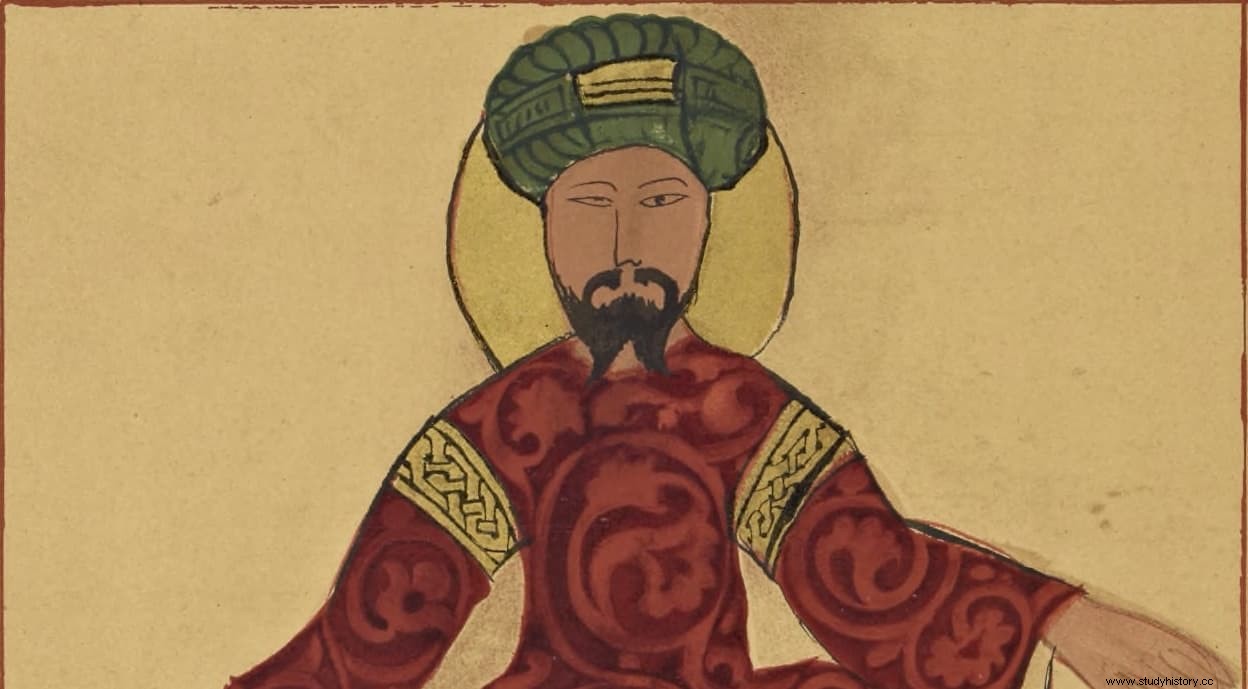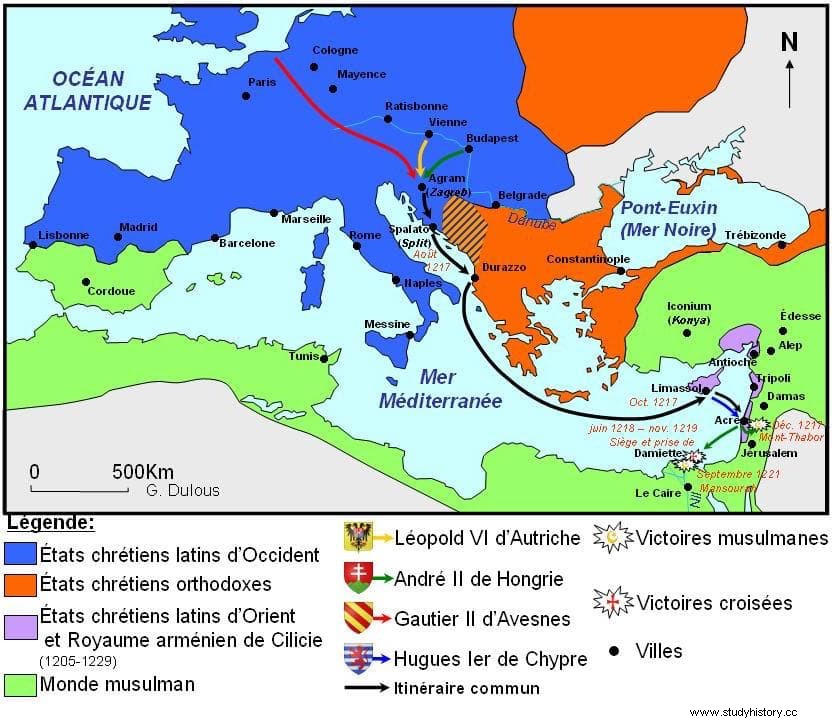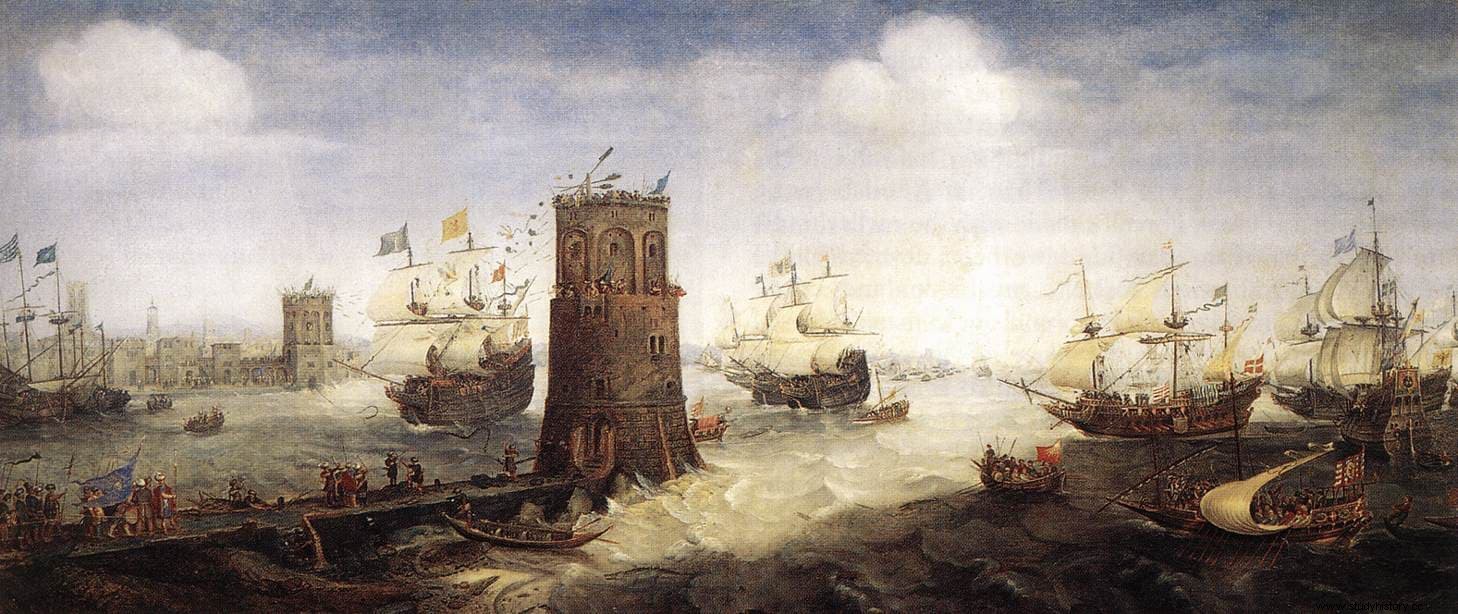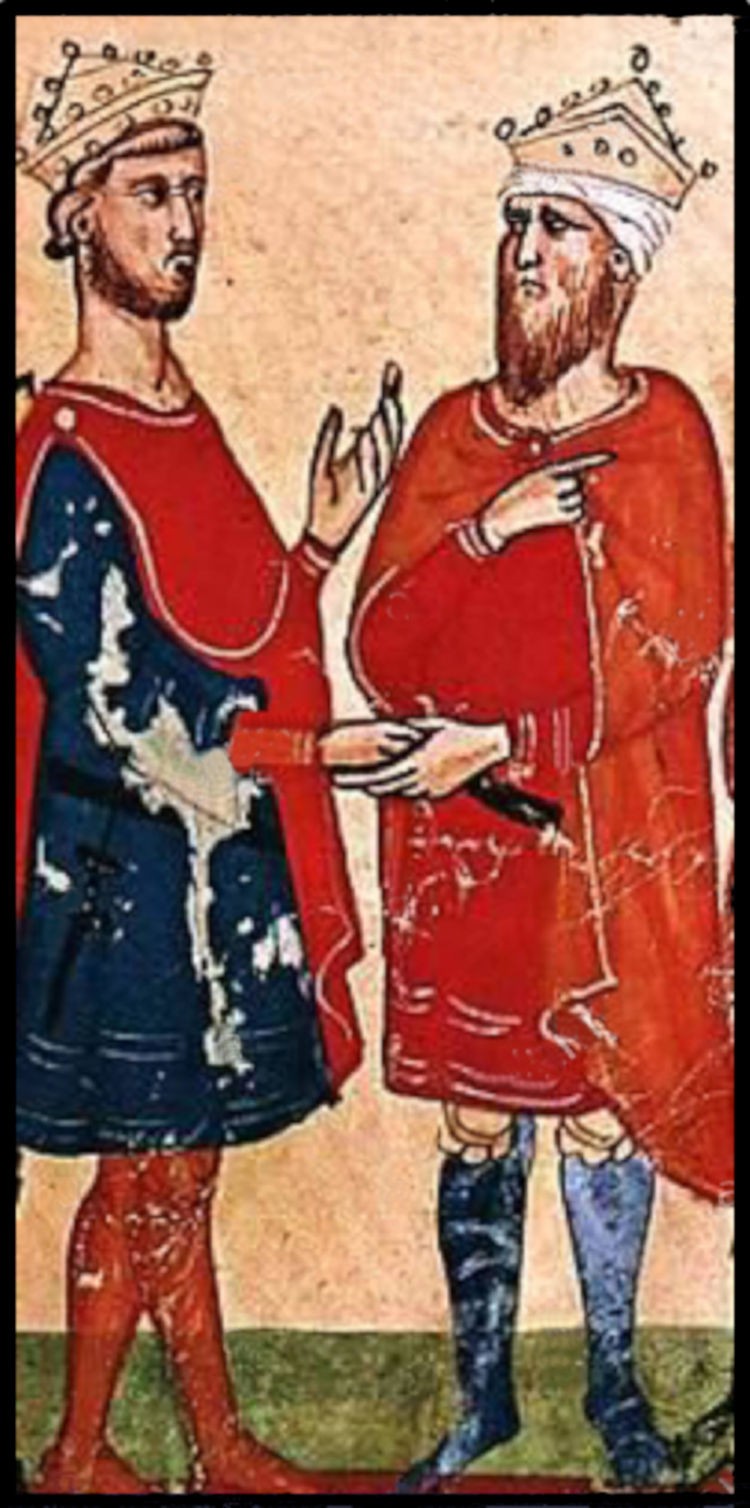On October 2, 1187, Saladin caused the collapse of the Kingdom of Jerusalem after subjecting its capital to a two-week siege and finally conquering it. That victory provoked the Third Crusade, which would not be able to recover the city. However, although it is common to read that Jerusalem was definitively in Muslim hands, the truth is that it returned to the Christians for ten short-lived years, between 1229 and 1239, thanks to a transfer that Al-Kamil, Saladin's nephew, made to Federico II Hohenstaufen, Holy Roman Emperor, to end the Sixth Crusade. And before, during the fifth, he met with Francisco de Asís.
We have already dedicated other articles to Saladin, the sultan of Egypt and Syria, founder of the Ayyubid dynasty that unified all Muslims in North Africa and the Middle East against the Abbasid Caliphate first and the Crusaders later, achieving general admiration not only for his military genius but also for his chivalry.
Well, Saladin had a brother named Al-Adil, who was often referred to as Safadin by Christians because of his title of Sayf al-Din. (Sword of Faith), who became his right hand, valuablely helping him in his campaigns because he also showed great competence in war and politics.

So prominent was the figure of Al-Adil that even Richard Lionheart he proposed to join her family by marriage, offering as possible wives her younger sister Joan of England or her niece Eleanor of Brittany to reign with one of them in Jerusalem. Al-Adil was interested but the high hierarchy of the Church opposed it and threatened with excommunication, so the plan was frustrated and, on the death of Saladin, the subsequent dispute over the succession was unleashed.
Al-Adil tried to mediate between Saladin's sons but there was no way to reach an agreement and in the end he supported the one his brother wanted as heir, Al-Afdal, in exchange for being named sultan of Egypt and Syria. In that position he did a remarkable job, although much of it was due to his son Al-Kamil, who was the one he held while he went on one of his numerous campaigns.

The great objective of both was to avoid a new crusade that would spoil the economic recovery again, that is why they maintained good relations with the crusader states and promoted commercial exchange with them. Unfortunately, the purposes were one thing and the reality another.
After two decades of tranquility and prosperity, everything fell apart when Pope Innocent III called the Fifth Crusade, confirmed by his successor Honorius III. The standard-bearers were King Andrew II of Hungary and Leopold VI of Austria, who unsuccessfully tried to take Jerusalem and in 1218 were reinforced by two Nordic armies led by Olivier of Cologne and William I of Holland, who agreed to an alliance with the Seljuk sultanate of Rüm to attack Syria by opening a second front. With the help of a Genoese fleet, they laid siege to Damietta, a city that Al-Kamil had to defend because it was in Egypt, his governorate.
And it is that Al-Adil had just died leaving the witness to his son but, to avoid the typical problems that arose in those circumstances, the Ayyubid domains were divided into three parts, being the Egyptian for him and the other two falling on his brothers Al-Muazam Issa (Palestine and Transjordan) and Al-Ashraf Musa (Syria and Jazira), although both recognized the authority of the eldest son, since his father already had him as viceroy.
As was the case with his father, Al-Kamil Muhammad al-Malik (such was his full name) is usually known by a nickname:Meledin. It was put on by the Frankish Crusaders, who had already tried to break the status quo with two uncoordinated and unsuccessful raids against Rosetta in 1204 and Damietta in 1211.

That last city, as we can see, suffered the ravages of the war again seven years later, this time in a much more serious way to the point that it ended up falling without Al-Kamil being able to prevent it. In fact, the loss of the square was due in part to a coup attempt hatched by Emir Imad ad-Din ibn al-Mashtub, commander of the Kurdish Hakkari regiment, who planned to replace him with his little brother Al-Faiz Ibrahim, which he considered more flexible.
Al-Kamil had to flee hastily to Yemen (where his son Al-Masud ruled) and, although in the end the arrival of Al-Muazzam put an end to the conspiracy, the Crusaders took the opportunity to tighten the siege and would end up taking Damietta shortly after .
Everything would have ended sooner if they had accepted the generous offer made by Al-Kamil:delivery of Jerusalem and reconstruction of its walls (which his brother had demolished months before to prevent its defense if it was occupied by the enemy). He even agreed to return the so-called True Cross, a fragment of wood that according to tradition belonged to the cross of Christ and that Saint Helena (the mother of the Roman emperor Constantine) had discovered centuries ago, differentiating her from the thieves Dimas and Gestas thanks to a miracle (hence the true); this cross had fallen into the hands of Saladin in the battle of the Horns of Hattin but it seems that it was lost in Damascus in the war context, so Al-Kamil's proposal was empty.

In any case, it was useless. The crusaders, influenced by the religious leader of the campaign, the papal legate Pelagio Galvani (originally Pelayo Gaitán, as he was a Hispanic cardinal, from León to be exact), were so sure of their success that they rejected any negotiation. The conversations held with Francis of Assisi, the future saint, who had traveled to the Holy Land to mediate, were also useless, although tradition says that his objective was to try to convert the sultan, which was more than unlikely. He was kindly received by him in his camp for four days and even received a pass to preach. A later legend says that Francis challenged Muslim clerics to an ordeal and, although they refused, he actually walked on hot coals.
The stubbornness of the crusaders was revealed to be wrong because, after a couple of years of peace and closing themselves to a new offer, they set out for Cairo to find that Al-Kamil ordered the dikes of the Nile to be opened and thus flood the valley. That meant the end of the Christian campaign because they were no longer facing man but Nature.
Swallowing their pride, they were forced to retreat and Al-Kamil himself, in a gesture of nobility, provided them with provisions and tended to the wounded. They signed an eight-year truce that never came to fruition because Frederick II Hohenstaufen, Holy Roman Emperor and King of Sicily, was willing to take back Jerusalem and the cross, and once he had established control over his German and Italian territories, decided to attempt the Sixth Crusade unilaterally, without authorization from Rome.

He considered that it was a propitious moment, since Al-Kamil and his brother Al-Muazzam vied for power, the latter trying to impose the primacy of Syria over Egypt. In this context, Federico II presented himself as a good alliance for Al-Kamil, for which he was willing to give him Jerusalem (except for the Dome of the Rock and the Aqsa mosque, a sacred place for Islam) and they agreed to do so to their chagrin. of Pope Gregory IX, who excommunicated him in the context of that struggle for dominance of the Italian peninsula that were the wars between Guelphs and Ghibellines, using as an excuse that he had broken his crusading vows.
When the emperor arrived in the Holy Land in 1227, he found that Al-Muazzam had just died, so the treaty lost part of its value, since the third brother in contention, Al-Ashraf, accepted that Al-Kamil would stay. Palestine and Transjordia in exchange for handing over Syria.

Even so, diplomacy prevailed for once and in 1229 they agreed to a ten-year peace with the cession to the Christians of Jerusalem, of which Frederick crowned himself king on behalf of his son, Conrad IV of Germany, as he considered having rights. being married to Yolanda de Brienne, daughter of Juan de Brienne (who had been nominal monarch of the Kingdom of Jerusalem between 1210 and 1225) and Maria de Montferrato.
That pact was and is exceptional in the turbulent history of the Middle East because, in addition to Jerusalem (with the exceptions noted), it also granted the emperor a corridor that connected that city with the sea and in which there were some emblematic towns for Christians such as Bethlehem, Nazareth, Sidon and Jaffa. For his part, Federico undertook to respect the lives and properties of the Muslim neighbors and to guarantee that they would have their own administration and justice; of course, they could also practice their faith. The demolished walls were rebuilt and a hopeful period began that, as you can imagine, would not last.

Frederick II had to quickly return to Europe to attend to Imperial and Italian affairs, while Al-Kamil also ran into problems with the Seljuks (the Turkish dynasty that ruled Asia Minor and the Persian Gulf area) and the Khezmites (the Sunni Turks, founders of the Khurasmian Empire).
His sons As-Salih Ayyub and Al-Adil took over when he died in 1238, a year before the peace treaty expired, although they ended up fighting and defeating the former because he allied himself with the Khezmites and the Hospitallers; Instead, the Templars supported his uncle, in what was a real civil war.
Jerusalem would be reconquered by the Khezmite Mamluks in 1244 and then taken from them by As-Salih Ayyub. The city would remain in Muslim hands until 1917, but in the meantime, Louis IX of France was organizing the Seventh Crusade…and back again.
